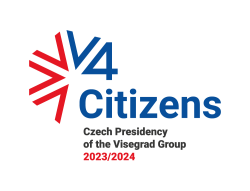
Uncanny under-performer: fixing V4 digital gap
What are the challenges and sweet spots for the Visegrad Group countries?
Central and Eastern Europe (CEE) has experienced unparalleled GDP growth in recent decades, nearly doubling the growth of the Eurozone in 2015, mainly through multinational companies’ investments and generous EU structural funds, yet has only slightly climbed the global value chain ladder.
As multinational companies tend to flock to CEE due to rising labour costs, there seem to be a wide-spread consensus between political elites that it is high time to develop systemic instruments that will aid the development of knowledge based economy in the region.
Although bridging the development gap between CEE and Western Europe may be unrealistic[1], raising the region’s capacity to innovate might as well serve as a one step towards achieving this goal. One obvious circumstance that can bear tremendous effects for region’s development is unveiling of the long-anticipated European Commission’s Digital Single Market strategy (DSM).
In this brief paper I will try to examine what are the regions’ challenges and sweet spots as well as propose concrete policy interventions, in particular for the Visegrad Group countries.
State of affairs
There is a consensus between scholars that innovation should be understood as the “implementation of a new or significantly improved product, process, marketing or organisational method” (Eurostat & OECD definition), but would such a narrow and technical definition suffice? Just as policy intervention in non-health related issues (such as education or housing policy) may lead to the improved health of citizens, the sustained effort in an area just vaguely connected to the innovation ecosystem may result in significant progress of innovation.
As a matter of fact, policymakers would benefit from a fairly wide view that would include areas that are not traditionally the first point of interest of politicians who are wishing to push the economy of their country forward. Such a position is explored by J. Furman, who developed the term of national innovative capacity. His definition reflects a “nations’ ability to generate new ideas and to translate them into economic growth”, measuring not only the availability of public R&D infrastructure and financing, but also incentives for companies to innovate, their ability to seize foreign markets and perhaps most importantly, the strength of linkages between public and private actors involved with the innovation ecosystem, which translates into the level of human capital and trust.
I dare to argue that the latter should be of particular concern for the governments of CEE. As the term CEE has been so widely used as to include countries of such diverse and incomparable backgrounds as the Czech Republic, Bulgaria and Ukraine, for the purpose of clarity I am primarily focusing on the Visegrad Group countries (Czech Republic, Hungary, Poland and Slovakia). One of the most complex comparative studies of innovation performance within the EU is the European Innovation Scoreboard (EIS), published annually by the European Commission annually since 2001.[2]
How is the Visegrad 4 performing? Fairly unsuccessfully, under performing in all indicators of the study over years with perplexing consequence, earning the diplomatically coined term of moderate innovators (Table 1). If that’s of any consolation – EU is not doing globally very well either. The EU’s EIS indicator amounts to just 81% of the one of the US, whereas its private R&D-to-GDP ratio makes up for only 57% of our American counterparts.
As far as research is concerned, according to Digital Agenda Scoreboard, Visegrad countries are particularly unsuccessful in competing for funding for ICT projects within Horizon 2020 scheme (Table 2). This is clearly a missed opportunity not only for for modernization of administration’s ICT infrastructure, but more importantly for experimenting with products and services, that otherwise would not gather required funding.

Additionally, majority of enterprises in Visegrad countries can be characterized as having a very low level of digital density – meaning i.e. that only minority of employees uses internet, broadband is slow, access to ICT specialists is scarce, and so is usage of Customer Relationship Platforms (CRM) and Enterprise Resource Planning (ERP) software, as well as web sales (Table 3). Some of the issues cannot be solved without cooperation with country’s authorities and coordinated efforts – telecommunications infrastructure will not be initiated and modernized by SME’s – however, there are areas that are actionable and can boost region’s performance immediately.

One of such areas is cloud computing, that allows for companies and institutions to utilize processing power and storage capacity, that traditionally would require serious capital expenditure. Compared to other 15 EU countries (EU15) and other new member states (NMS9), usage of cloud computing services among V4 SME’s is still scarce (Table 4).
More attention to the development and popularization of such services would increase region’s attractiveness in the anticipation of an introduction of anti-geoblocking legislation by European Commission that will challenge EU’s businesses to compete for customers online.

Gyódi K., Are the V4 Enterprises Ready to Join the Digital Evolution?, Aspen Institute 2016
Where the V4 can do better?
Every major innovation performance study underlines the importance of the existence of an environment that enhances rather than hinders collaboration as a prerequisite for success. This can entail very broad and hard to measure indicators, such as the density of linkages within the ecosystem, knowledge flows between academia and business or investment encouraging context, to quantifiables such as the number and quality of public-private partnerships or the effectiveness of clusters.
The context of collaboration quality and social capital in CEE is heavily marked by the still fresh transition from the socialist state and relatively frequent (but shallow) changes in the modus operandi of formal institutions. Both indispensable factors such as the introduction of market capitalism or the implementation of the acquis communautaire as well as unnecessary shifting structure of central administration, short-sighted policies and the unpredictability of taxation all inhibit entrepreneurship in Visegrad countries. Immediate policy responses to these shortcomings can include:
1) Maximising research collaboration, knowledge flow and student exchange within the Visegrad Group – the International Visegrad Fund has significantly improved intra-Visegrad mobility among MA/PhD students and post-docs, currently supporting ca. 50 exchanges a year, yet to maximise the efficiency of collaboration, the program could focus only on research exchanges and the catalogue of host institutions could include not only universities, but also research institutes, R&D centres and think-tanks.
2) Incentivising start-ups & SME-s to form cross-border teams and partnerships – Erasmus for Entrepreneurs is one successful benchmark of employee rotation. The Visegrad Group could introduce its own dedicated program and complement it with incentives ranging from seed funding and mentoring for cross-border start-ups, to tax rebates and enhanced IP protection from the Visegrad Patent Institute.
3) Governmental facilitation and coordination of lobbying efforts in Brussels – in many cases, the interests of Central European countries do not get enough attention, because of the lack of communication between the actors – Permanent Representatives to the EU, MEPs and industry representatives. One immediate example of coordinated effort that is needed is setting–up a V4 common position regarding the review of the regulatory framework for the telecommunications sector, that may speed up implementation of the 5G standard, Juncker’s European Commission’s priority and necessary ingredient of the digital economy that includes IoT – a frontier V4 significantly lags behind.
4) Identifying and exchanging best STI policy practices each V4 country has its strengths and specialties; Hungary is exceptionally successful in securing patent revenues from abroad, while the Czech Republic’s international scientific cooperation is booming. V4 governments and municipalities should identify and exchange successful policy scenarios, including the creation of thematic V4 expert teams and the rotation of public servants.
5) Fostering informal knowledge-sharing and marketing – where formal institutions lack capacity, informal networks kick in. The most successful V4 initiatives for knowledge-sharing and networking should be identified and fostered – avenues as Think.BDPST, GLOBSEC or Krynica Economic Forum provide crucial platform for regional cooperation and enhance the level of trust between stakeholders, while networks such as the Slovak Alliance for the Internet Economy or the Coalition for Polish Innovations aim to integrate national ecosystems. Cross-border projects like New Europe 100 celebrate talent and creativity of the region, marketing its openness and entrepreneurial talent abroad, with media moguls such as Financial Times.
6) Developing appropriate performance measurement tools – traditional innovation measurements tend to produce traditional innovation policy, and innovation performance indicators ‘were designed for a manufacture-based linear model of innovations’[3] and as the way we innovate changes, so the metrics need to change. Yet, more often than not we fall under ‘the tyranny of the quantifiable’, ignoring that traditional metrics fail to ‘adequately capture ‘hidden innovation’: innovation in services, the public sector and the creative industries, or new trends in open and user-led innovation’. Coordination of development of new measurement tools by the Visegrad Group may significantly influence policy planning and evaluation processes, while facilitating data collection and comparability.
7) Popularizing cloud-computing standards across the region – to play a role in digital race, SME’s need to increase their productivity. One effective way to do it is to raise the use of cloud-computing services. Governments may not only lead by example, modernizing the way they organize work internally and deliver services to the public, but also fairly easily promote desired standards by providing tax refunds or free licensing.
Conclusions
For an innovation ecosystem to thrive, systemic, predictable and transparent policy instruments are key, particularly those that raise the number of interactions between actors, increase the level of trust and foster openness unbounded by national borders. Regional alliances, such as the Visegrad Group are in perfect position to play a crucial role in the process of facilitation of formulating and executing policy objectives, triggering exchanges of best practices, and initiating modern performance measurement tools.
Yet, the Visegrad countries are underperforming terribly. A change in the trend will not be achieved without agreeing on the agenda for growth across the political spectrum and incentivising all relevant stakeholders to get on board. A good starting point for the governments in the region is to finally embrace value-neutral, data-driven policies, rather than copy-paste fashionable slogans or day-dream of ‘Central European iPhone’s’.
There are concrete battles to be fought on the Digital Single Market front on issues ranging from privacy, through investment in ICT infrastructure and geo-blocking to cybersecurity. Whether we will succeed relies entirely on the capacity of our governments to swallow the pride and present a coordinated stance that would be in line with interests of both region’s businesses and citizens.
Maciej Kuziemski is an Atlantic Council Millennium Fellow 2016/17 and Res Publica Nowa board member. He is a Master of Public Policy Candidate at the Blavatnik School of Government, University of Oxford
This article was first published in Globsec Policy Institute on 25 Oct 2016.
Further reading:
Veugelers R., The European Union’s Growing Innovation Divide, Breugel, Brussels 2016.
Furman J., Porter M., Stern S., The determinants of National Innovative Capacity, Research Policy 2001
Gyódi K., Are the V4 Enterprises Ready to Join the Digital Evolution?, Aspen Institute 2016
Measuring innovation, NESTA 2008 Program of the Polish Presidency in the Visegrad Group
[1] More about the rising innovation divide in Europe: R. Veugelers, The European Union’s Growing Innovation Divide, Breugel 2016
[2] Before 2011, under the name Innovation Union Scoreboard. The following data in the text are from European Innovation Scoreboard 2015. http://ec.europa.eu/growth/industry/innovation/facts-figures/scoreboards_en
[3] Measuring innovation, NESTA 2008
Read the original text in Visegrad Insight.
This article has been automatically generated from the Visegrad Insight magazine website, a project funded by the International Visegrad Fund. The opinions expressed in this article do not necessarily have to represent the official position of the donor, the Visegrad Group, or the publisher (Res Publica Nowa).







